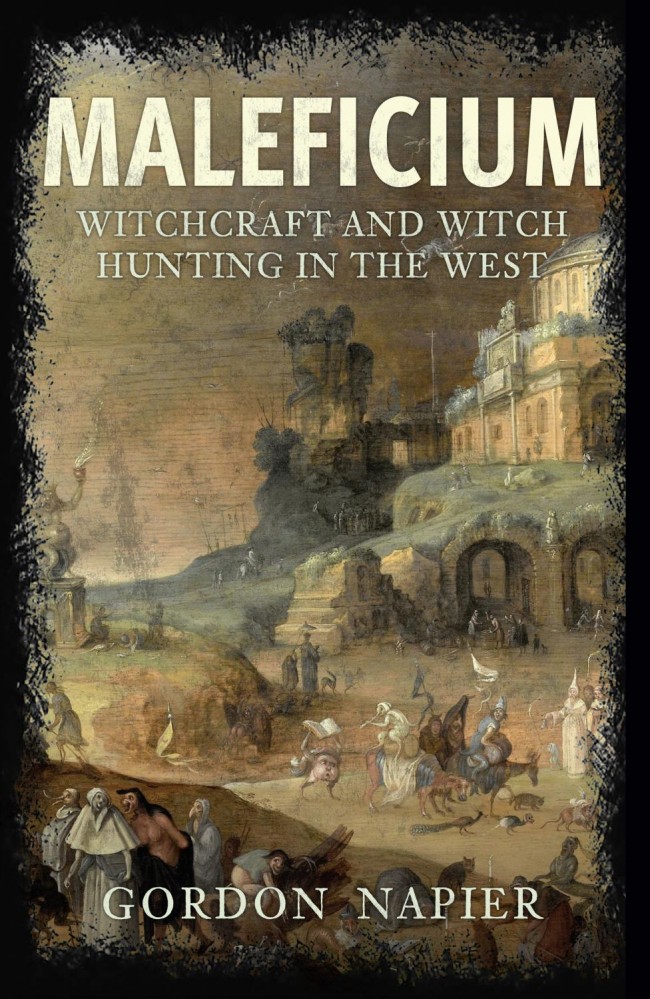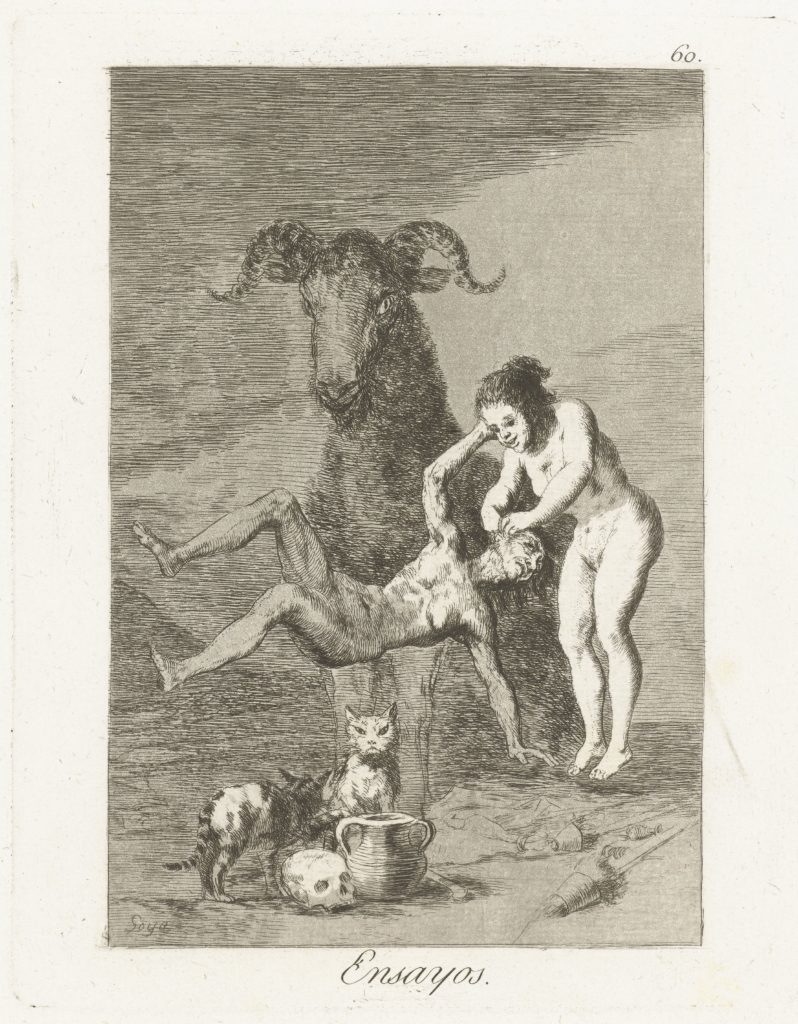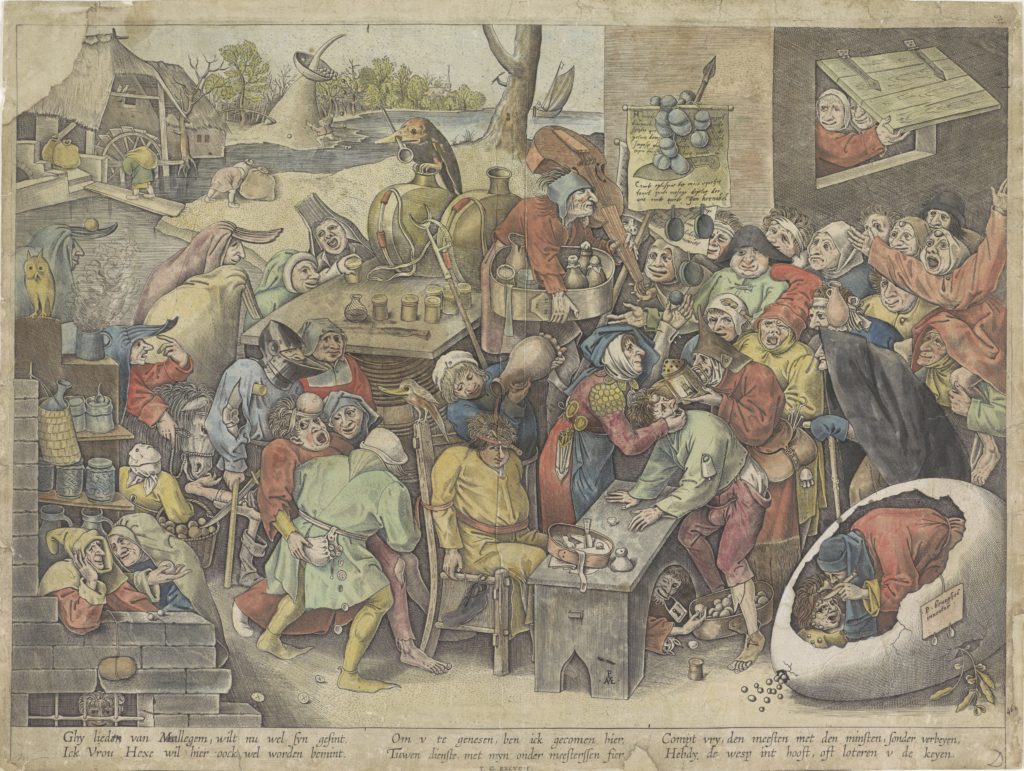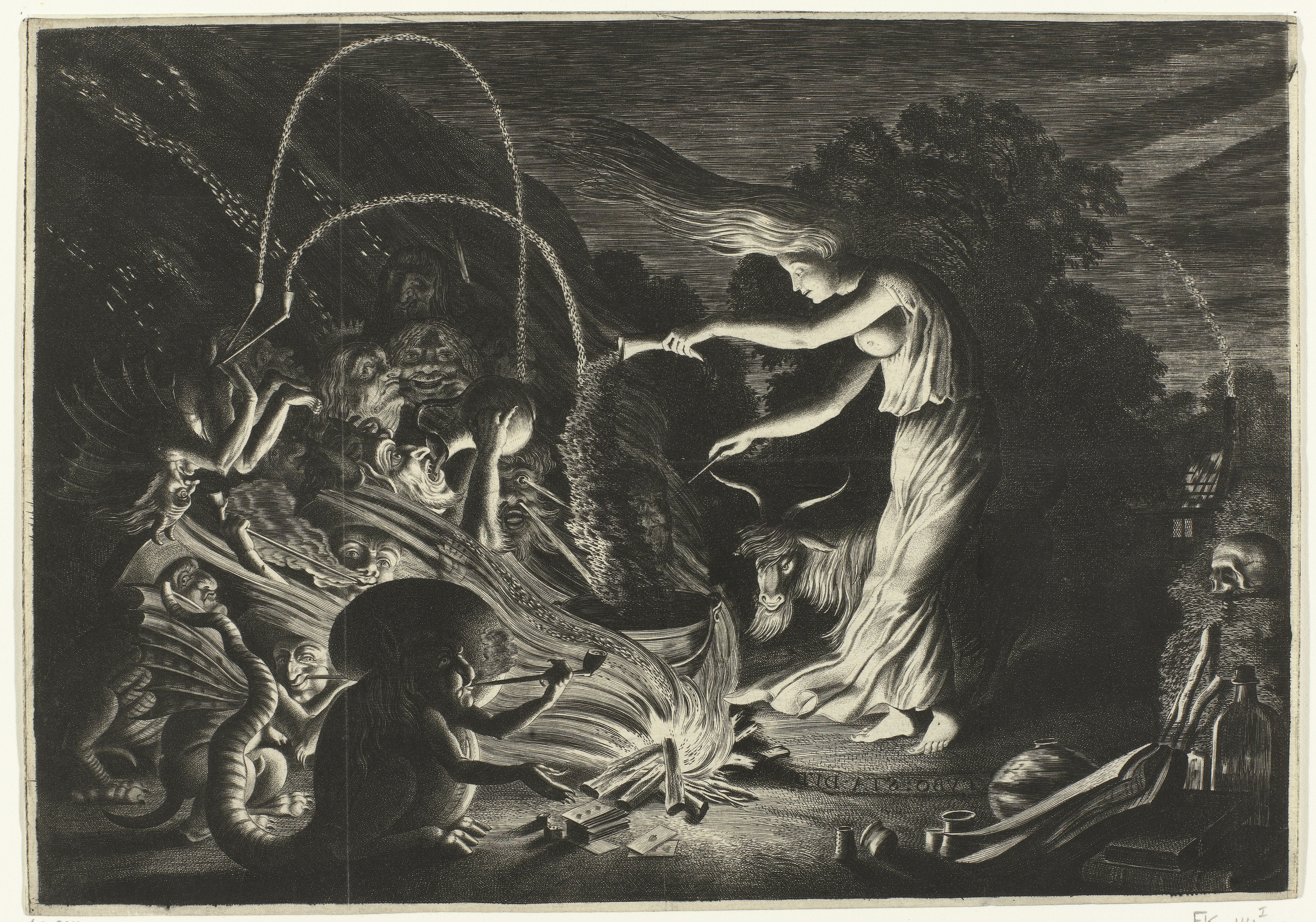The Early Modern Witch Trial occupies a uniquely evocative place in popular understanding, a contested space where facts are routinely fit to serve agendas. We spoke to Gordon Napier, author of the new book Maleficium: Witchcraft and Witch Hunting In the West (out now from Amberley), to greater contextualise some of the most common interpretations of 17th Century witch terror.
The Feminist Interpretation of Witch Hunts
“For the targets of attack in the witchcraze were not women defined by assimilation into the patriarchal family. Rather, the witchcraze focused predominantly upon women who had rejected marriage (Spinsters) and women who had survived it (widows). The witch-hunters sought to purify their society (The Mystical Body) of these “indigestible” elements – women whose physical, intellectual, economic, moral, and spiritual independence and activity profoundly threatened the male monopoly in every sphere.”
– Mary Daly, Gyn/Ecology (1987)
A theory first laid out during first-wave feminism and honed by the 1970s second-wave, feminist readers of witch terror portray it as a largely gendered assault in which the patriarchy used accusations of maleficium (harmful magic) to oppress women who stood out in some way or who intruded on exclusively male domains. Though this has largely fallen out of favour as more nuanced histories of the period emerged, it remains in currency particularly with radical feminists.

To what extent can we say that the Early Modern Witch Trial was an attack on women?
Gordon: It would be easy to form that impression because the legal authorities prosecuting witchcraft cases were invariably male-staffed. Witchcraft was perceived to be a mostly female form of crime- rather as piracy, say, was regarded as a male-dominated crime (notwithstanding the existence of the occasional female pirate). Yet it would seem strange to regard the suppression of high-seas piracy as an attack on men. To many in the era in question, witches were no less real than pirates. A few men were prosecuted as witches – a minority, but not a negligible one.
Women and girls were also prominent among the supposed victims of witches, and among those who made accusations. Women and girls often appeared as prosecution witnesses at witch trials. It could be said that the courts were taking the concerns of these females seriously and trying to protect them from the witches that they blamed for misfortunes within their communities. Sometimes women were yet more actively involved in witch hunting. For example they carried out searches of suspects’ bodies for the devil’s mark (patches of skin insensitive to pain) or for the features from which they were supposed to suckle their familiar spirits or imps.
A number of women travelled with Matthew Hopkins, the self-styled Witch Finder General, for this purpose. It might also be noted that the first effective witchcraft legislation in Early-Modern England was signed into law by Queen Elizabeth I. It’s hard to believe that Good Queen Bess would have supported something that was simply an attack on women.
To what extent were the female victims women who somehow stepped out of line?
Gordon: Here we are talking about the ‘female victims’ who were unjustly prosecuted as witches, rather than the females who were supposedly victimised by witches. It was fairly common (as contemporary critics like Reginald Scott noted) for female witch-suspects also to be ‘scolds’, ie argumentative, troublesome and aggressive to their neighbours. To be a ‘scold’ was a specific crime for women. (One punishment for convicted scolds was the ducking stool, which is often confused with the swimming – ie. floating- test for witches).
Many witch suspects were very poor, unlovely, unloved and marginalised. It is common to hear that a witch cursed the supposed victim after appearing on a doorstep as a beggar and being turned away. Perhaps society dealt with its own guilty feelings by demonising the needy, in some cases. People found witchcraft accusations expedient to get rid of those who were becoming a burden and a nuisance. (The discrepancy of crediting such wretched people with supernatural powers was not lost on contemporary critics of witch hunting, some of whom also wondered why the devil would associate with beggars rather than with the rich and powerful).
In larger witch scares, particularly in the German lands, a suspected witch could be almost anyone.
To what extent were women in a “pseudo-witchy” role – herbalists, midwives etc – targeted?
Gordon: Both men and women, known as ‘cunning folk’, or wise men and women, played a pseudo-witchy role, involving both herbalism and more superstitious and ritualistic practices. Sometimes these ‘cunning folk’ had a role in initiating witch-hunts, since they might diagnose someone who came to them as being the victim of malevolent magic. Midwifes were in an ambiguous position. Some midwives also assisted witch-hunters in the aforementioned capacity. Others fell under suspicion of witchcraft themselves, being susceptible to such charges if the young mother or newborn baby in the midwife’s charge suddenly fell ill. Witches were also associated with performing abortions.

The Witch-Cult Hypothesis and the Suppression of Paganism
“It is impossible to understand the witch-cult without first understanding the position of the chief personage of that cult. He was known to the contemporary Christian judges and recorders as the Devil, and was called by them Satan, Lucifer, Beelzebub, the Foul Fiend, the Enemy of Salvation, and similar names appropriate to the Principle of Evil, the Devil of the Scriptures, with whom they identified him.”
– Margaret Alice Murray, The Witch-Cult in Western Europe (1921)
Although incarnations of this belief go back to those first-wave feminist readings, Margaret Murray popularised the idea that Early Modern witches were in fact members of a cult, a remnant of a pre-Christian religion that worshipped a horned god, depicted as the Devil by the fearful Church that drove it underground. Curiously Murray’s influence is most commonly felt through supernatural fiction and in the roots of neo-paganism.
How has the witch-cult hypothesis proven to be untrue?
Gordon: Witchcraft cases invariably originate from mysterious misfortunes or maladies being popularly attributed to someone’s wicked spells. The idea of the evil magician being member of a devil-worshipping cult seems to be tacked on, to a greater or lesser extent. (Many of the beliefs associated with the witches Sabbath can also be explained by the Bible, which several times alludes to such things as infant sacrifice to Moloch.)
The main problem with Murray’s theory is that it relies on a particular interpretation of Early Modern witchcraft confessions, relating to the Satanic gatherings that witches were supposed to attend. There is little or no material evidence for such gatherings, and it is difficult to trace the survival of some supposed ‘Old Religion’ from antiquity into the era of the witch hunts. There again the intriguing idea that witches attended the Sabbath during some out-of-body experience is repeatedly hinted at. However, with any confessions, it is difficult to know how much information comes authentically from the suspect, and how much of it was the result of leading questioning by the interrogators. In some cases it is clear that the suspect made up a story, under duress, to get out of being tortured. The unfortunate suspect then had to list others who had attended a supposed gathering, thereby perforce condemning other innocent people. Those named would likely corroborate the invented story when they themselves were arrested and subjected to torture. (Johannes Junius, the mayor of Bamberg, smuggled out a letter, from the prison where he was being placed in just such a predicament by his captors).
There may be some truth in the idea that the devil supposedly venerated by witches was a demonised version of figures from mythology and folklore such as Pan and Puck, but it would not necessarily follow from this that there was a real and extensive witch cult. Murray’s theories about fairies (as the reclusive remnant of a diminutive race of people, rather than supernatural beings) also suffer from lack of supporting evidence, incidentally. It is an attempt to rationalise the otherwise obscure and bizarre references to interactions with fairies, which often feature in witchcraft accounts.
Though Early Modern Witch Trials generally took place within the regular legal system, rather than being ecclesiastical matters, what role did the church generally play the proceedings?
Gordon: This varied. The Medieval church had offered spiritual services, rituals, blessings, holy relics etc. to protect folk against witchcraft. This sort of thing went out with the Reformation, which is one reason more witchcraft cases were brought before secular authorities in the Early Modern era. In Protestant England the established church tended to discourage such thing as exorcisms, though there were religious enthusiasts who took a keen interest in their performance. Individual preachers might oppose the excesses of witch hunters, and thereby incur suspicion of being witches themselves.
The Puritan minister John Lowes suffered this fate during the witch hunt of Matthew Hopkins, and, denied a minister, had to recite his own funeral service on his way to the gallows. In the Catholic world there were also those who supported and those who opposed witch hunts. Kramer and Sprenger, the members of the Dominican Order who authored the Malleus Maleficarum included in it two different papal edicts that supported their witch-hunting campaign. Some of the most devastating witch hunts in Germany occurred in territories ruled by Catholic bishops. Catholic opponents of witch-hunts included the Jesuit Friedrich Spee and the Spanish Inquisitor Alfonso Salazar de Firas.
Membership of the Catholic Clergy did not bring immunity from suspicion of being a witch, as the priest Urbain Grandier found to his cost. Enemies within the church ensured that Grandier was prosecuted as a sorcerer. He was said to have sold his soul to the devil, and to have caused the demonic possession that supposedly afflicted the Ursuline nuns of Loudun. There were several similar cases involving demonic possessions in convents that were blamed on priests secretly practicing witchcraft.

Witchcraft Was Powered by Potent Hallucinogenics
An interesting contemporary interpretation, have suggested that reports of ‘flying ointment’ or the mass hysteria surrounding accounts of witchcraft were in fact a by-product of herbal dabblings. Often presented by anthropologists or pharmacologists
The hallucinogenic night flights theory is an interesting one, because it implies that the crime of which people were being accused was real to an extent… what’s your take on that?
Gordon: The theory seems to assume the ability of a group to share a collective, induced hallucination – or possibly some spiritual/out of body experience that is not entirely delusional. The idea that an individual could apply potions (containing hallucinogenic chemicals) in order to experience sensations of flight (or of shifting into a different body such as that of an animal) does not seem too controversial, and indeed some people during the witch-hunting wrote about this possibility, arguing against the proposition that witches actually flew or physically shape-shifted.
The association of witchcraft with toads may be relevant, too, as certain toads are said to have pyschoactive substances in their skin. The matter of communal interactions in an altered state of consciousness (or different body) is rather more problematic. Certainly the early church, in the Canon Epioscopi, condemned the demonic delusion of certain women who believed they rode on beasts through the night sky with Diana and other goddesses. This in terms that suggested it was an actual folk belief, which the church sought to discourage.
Early Modern witch-hunters and demonology writers such as Pierre de Lancre recorded the testimony of young Basque country witches who claimed to visit the Sabbaths, presided over by the devil-goat, after they went to sleep. Then there are the obscure sects (if such they were) such as the Benandante in Italy, who baffled the inquisition with accounts of visionary/dream battles in the sky against evil witches, so as to prevent the crops from being blighted.
I have come to no firm conclusion on the matter, nor is there a neat explanation. It could all be flim-flam and tall tales. Yet wilder speculation about interaction with other-realms and inter-dimensional entities could be indulged, but this is this best left to fantastical fiction writers (like HP Lovecraft in his The Dreams in the Witch House).
Gordon Napier is the author of The Rise and Fall of the Knights Templar and The Pocket A-Z of the Knights Templar: A Guide to Their History and Legacy. His new new book Maleficium: Witchcraft and Witch Hunting In the West is out now from Amberley.
